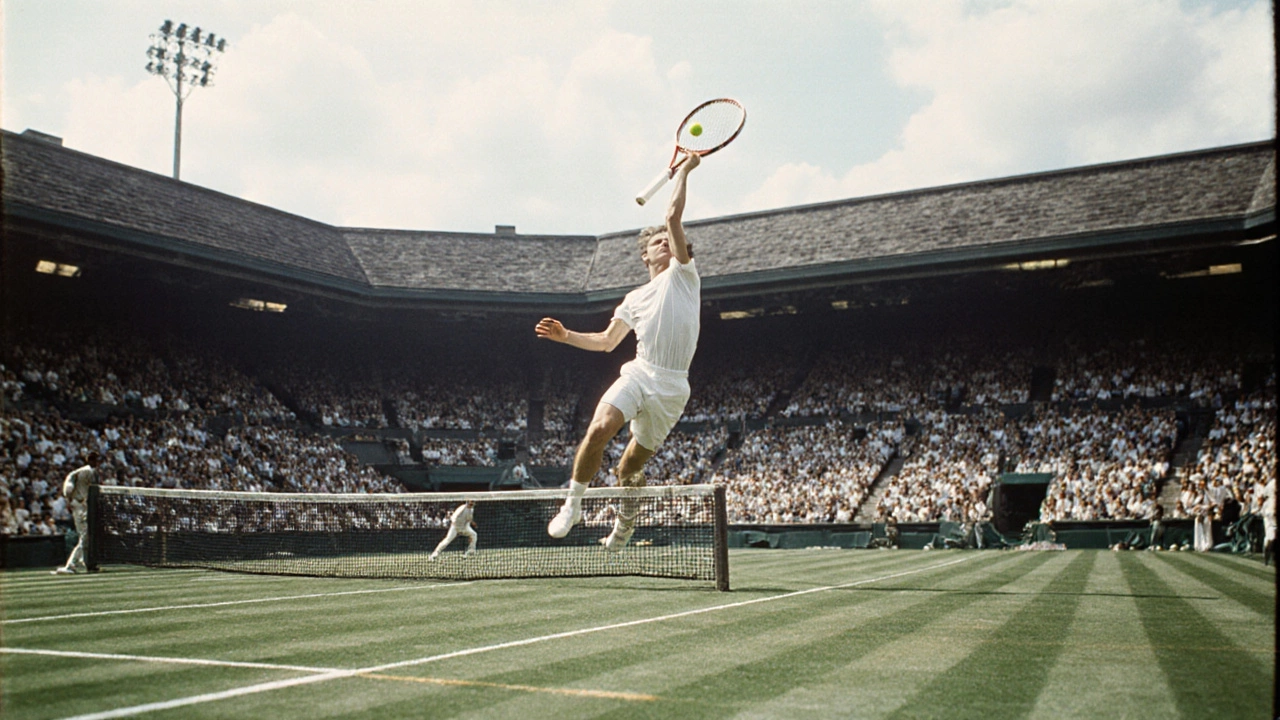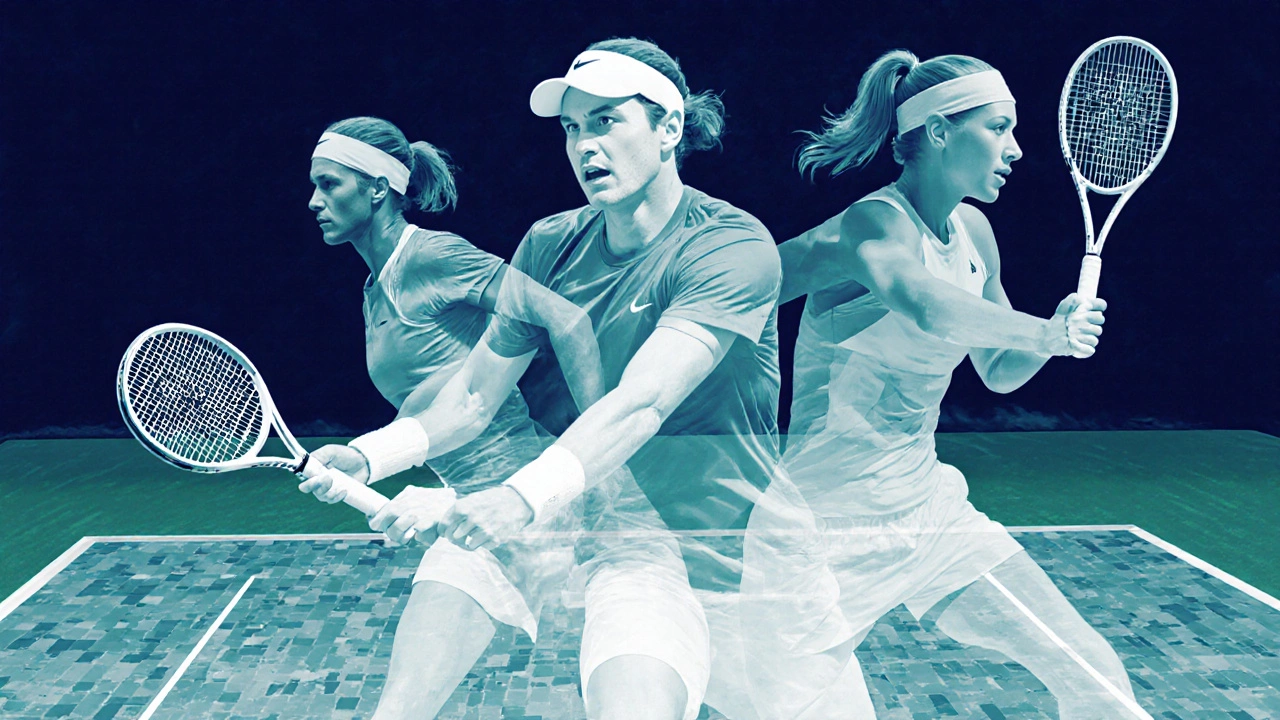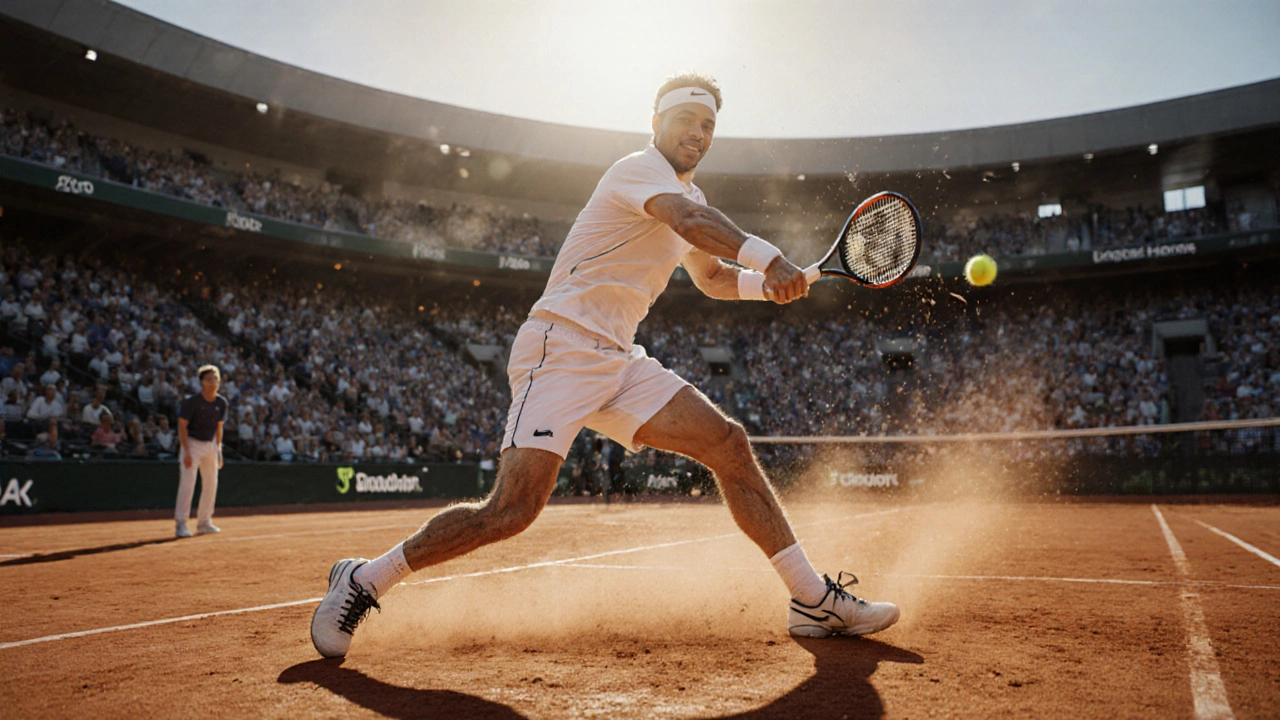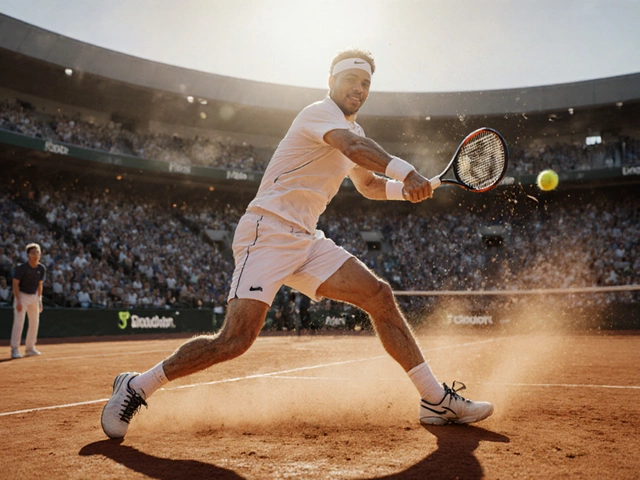Not all tennis players are built the same. You might watch a match between two top pros and think they play the same game-but they don’t. Their styles, movements, and mindsets are as different as a sprinter and a marathon runner. If you’ve ever wondered why some players dominate from the baseline while others crush the net like a predator, it’s because there are four main types of tennis players. Knowing which one you are-or which one you’re up against-can change how you train, how you play, and even how you win.
1. The Baseline Basher
This is the most common type you’ll see on clay and hard courts. The baseline basher stays deep behind the line, grinding out rallies with heavy topspin and consistent depth. They don’t try to end points quickly. They wait. They wear you down. Think Rafael Nadal on clay or Novak Djokovic on hard courts. Their weapons? Precision, endurance, and patience.
These players hit forehands with 3,000+ RPM and can return serves with accuracy that makes you question your own serve. Their backhands are either one-handed (like Federer) or two-handed (like Djokovic), but either way, they’re reliable. They rarely come to the net unless forced. Their goal? Make you miss.
If you’re this type, your strength is consistency. Your weakness? Lack of variety. If your opponent starts mixing in drop shots, lobs, or sudden net approaches, you’ll struggle unless you adapt. Training for baseline bashers means hours on the court working on footwork, spin control, and stamina-not just power.
2. The Serve-and-Volleyer
Once the dominant style in the 80s and 90s, serve-and-volley is now rare-but deadly when done right. This player serves, then sprints forward like a cheetah chasing prey. They don’t wait for the return. They attack it. Their goal? End the point before it becomes a rally.
Think Pete Sampras or Stefan Edberg. Their serves are pinpoint accurate, often landing wide or down the T. Their volleys are crisp, low, and angled. They don’t hit winners from the baseline-they hit them from inside the service line. This style thrives on fast surfaces: grass, indoor hard courts, or dry clay.
But here’s the catch: serve-and-volley requires lightning-fast reflexes, perfect timing, and nerves of steel. One slow step, one poorly timed volley, and you’re exposed. Modern players with heavy topspin and deep returns make this style risky. Still, in doubles or on grass, it’s a game-changer. If you’re this type, you need to practice volleys daily, work on your approach shots, and train your legs for explosive movement.
3. The All-Courter
This is the complete package. The all-courter can hit from anywhere, move to any spot, and adapt to any style. They’re not locked into one zone. They shift between baseline and net like a chess player switching tactics mid-game. Roger Federer was the ultimate all-courter. So was Martina Navratilova.
They serve-and-volley when the situation calls for it. They crush backhands from the baseline. They come in on short balls. They hit drop shots that make opponents stumble. They’re unpredictable. Their strength? Versatility. Their training? Everything. Footwork drills, net play, return practice, fitness, and mental flexibility.
If you’re an all-courter, you’re rare. Most players specialize. But if you can do it, you control the match. You force your opponent to prepare for four different styles in one game. The downside? It takes years to master. You need elite coordination, quick decision-making, and the mental discipline to switch modes instantly.

4. The Counterpuncher
Counterpunchers are the masters of defense. They don’t hit winners-they make you hit winners. They let you take control, then steal it back with perfect timing. Think Andy Murray or Stan Wawrinka. They’re not the fastest, but they’re the smartest. They read your shots before you hit them.
These players have incredible footwork and balance. They absorb pace, redirect it, and place the ball where you least expect it. They rarely serve aggressively. They don’t rush the net. Instead, they wait for your error-or the short ball. Their returns are legendary. They can return a 130 mph serve with a deep, angled crosscourt reply that forces you to move.
If you’re a counterpuncher, your game is built on patience and precision. You win by making your opponent frustrated. Your biggest risk? Playing against aggressive baseliners who never give you a short ball. You need to develop your own offensive weapons-like a sharp slice backhand or a well-timed inside-out forehand-or you’ll get overwhelmed.
How to Tell Which Type You Are
Don’t guess. Test it. Play three matches against different opponents and ask yourself:
- Do you feel most comfortable standing deep behind the baseline, trading shots for minutes?
- Do you feel alive when you rush the net after a good serve?
- Do you switch between offense and defense mid-point without thinking?
- Do you win by making your opponent miss rather than hitting winners?
Most players start as one type, then evolve. A baseline basher might learn to come to the net. A counterpuncher might add a more aggressive forehand. The key is knowing your base style so you can build on it, not fight against it.

What Type Should You Be?
There’s no ‘best’ type. Only the right one for you. Your body type, athleticism, mental focus, and even your personality matter.
Are you patient, calm, and methodical? You might be a baseline basher or counterpuncher. Are you explosive, confident, and aggressive? Serve-and-volley or all-court might suit you. Do you love to read the game and react? Counterpuncher. Do you enjoy variety and creativity? All-courter.
Trying to be someone you’re not will drain you. A slow, steady player trying to become a serve-and-volleyer will burn out. A quick, agile player trying to grind out 40-shot rallies will get bored and frustrated.
Work on your strengths. Improve your weaknesses. But never lose sight of your core style.
How to Beat Each Type
Knowing your type helps you play better. But knowing your opponent’s type helps you win.
- Against a Baseline Basher: Mix up pace. Use drop shots, lobs, and short balls. Don’t let them dictate the rhythm. Move them side to side. Serve and volley when you can.
- Against a Serve-and-Volleyer: Hit deep returns. Aim for their feet. Don’t give them easy volleys. Use heavy topspin to make their net play harder. Stay calm-they want you to panic.
- Against an All-Courter: Be consistent. Don’t give them easy openings. Force them to hit more shots. They thrive on chaos-keep it simple and predictable.
- Against a Counterpuncher: Don’t force winners. Play high-percentage tennis. Avoid unforced errors. Hit deep, consistent shots. Wait for them to make the mistake. They’re patient-you must be more patient.
Final Thought: Style Isn’t Static
Tennis changes. So do you. Your body changes. Your goals change. Your favorite surface changes. Your style can, too.
Many pros start as baseline players and later add net play. Some serve-and-volleyers become all-court threats. Counterpunchers learn to take control. The best players don’t just stick to one type-they blend them.
So don’t box yourself in. Know your natural style. Build from it. But stay open to growth. Because in tennis, the player who adapts wins-not the one who plays the same way every match.
Can a tennis player be more than one type?
Yes. Most elite players blend styles. For example, Novak Djokovic is primarily a baseline basher but uses counterpunching and all-court tactics depending on the opponent. Roger Federer was an all-courter who mixed serve-and-volley, baseline grinding, and net play. The top players adapt-they don’t stay stuck in one box.
Which tennis player type wins the most Grand Slams?
Baseline bashers and all-court players dominate modern Grand Slams. Players like Nadal, Djokovic, and Alcaraz win most titles because they can adapt to clay, hard, and even grass courts. Serve-and-volleyers rarely win majors today due to faster rackets and heavier balls that make net play riskier. Counterpunchers like Murray win titles too, but they’re less common at the top.
Is serve-and-volley still useful in today’s tennis?
Yes-but only in specific situations. It’s rare in singles on slow surfaces, but still deadly on grass (like Wimbledon) and in doubles. Many top players use it as a surprise tactic, not their main strategy. A well-timed serve-and-volley can break a rhythm, win a crucial point, or shift momentum. It’s a weapon, not a full-time job anymore.
How do I know if I’m a counterpuncher?
If you win more points by making your opponent miss than by hitting winners, you’re likely a counterpuncher. You don’t rush shots. You stay balanced. You return deep, redirect pace, and wait for the short ball. You’re not the fastest, but you’re the smartest. Your matches often feel like long, tense battles where the winner is the one who holds on longest.
Should I try to change my playing style?
Not unless you’re stuck. If you’re winning and enjoying the game, stick with your style. But if you’re losing to certain types of players, add tools-not a whole new identity. A baseline player can learn a drop shot. A counterpuncher can develop a more aggressive forehand. Small upgrades beat total overhauls.

